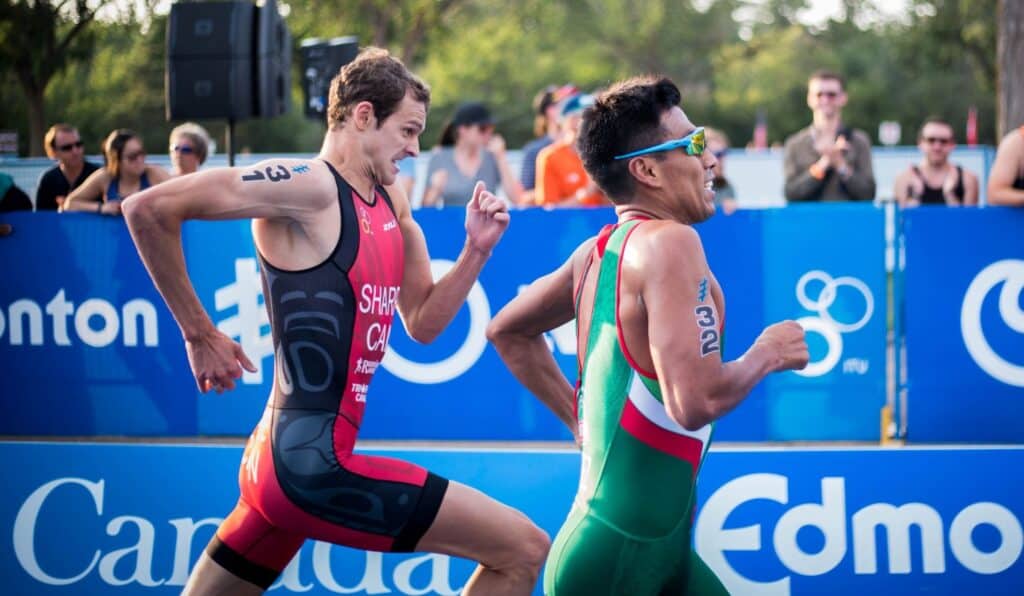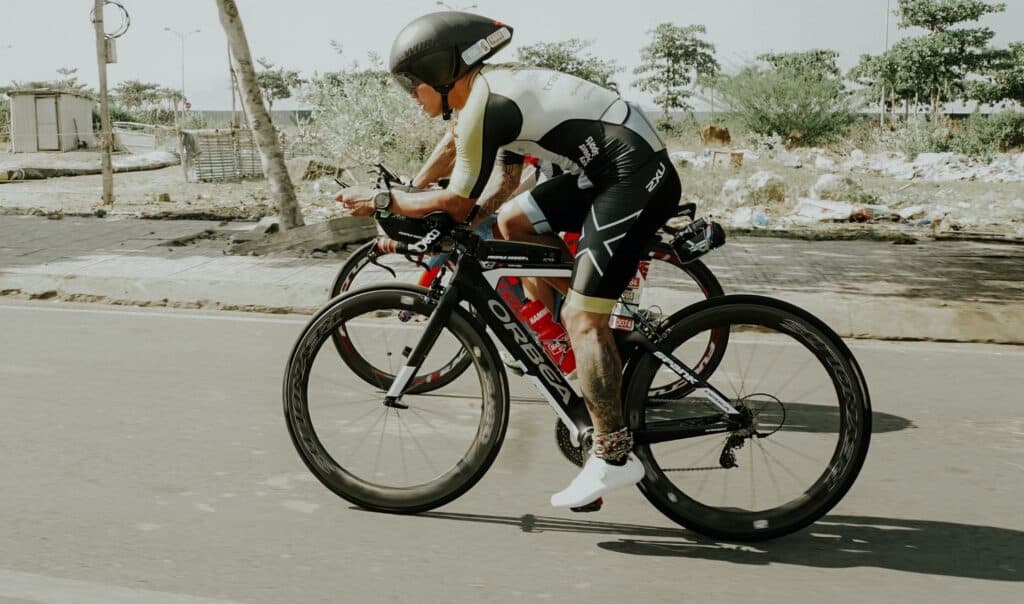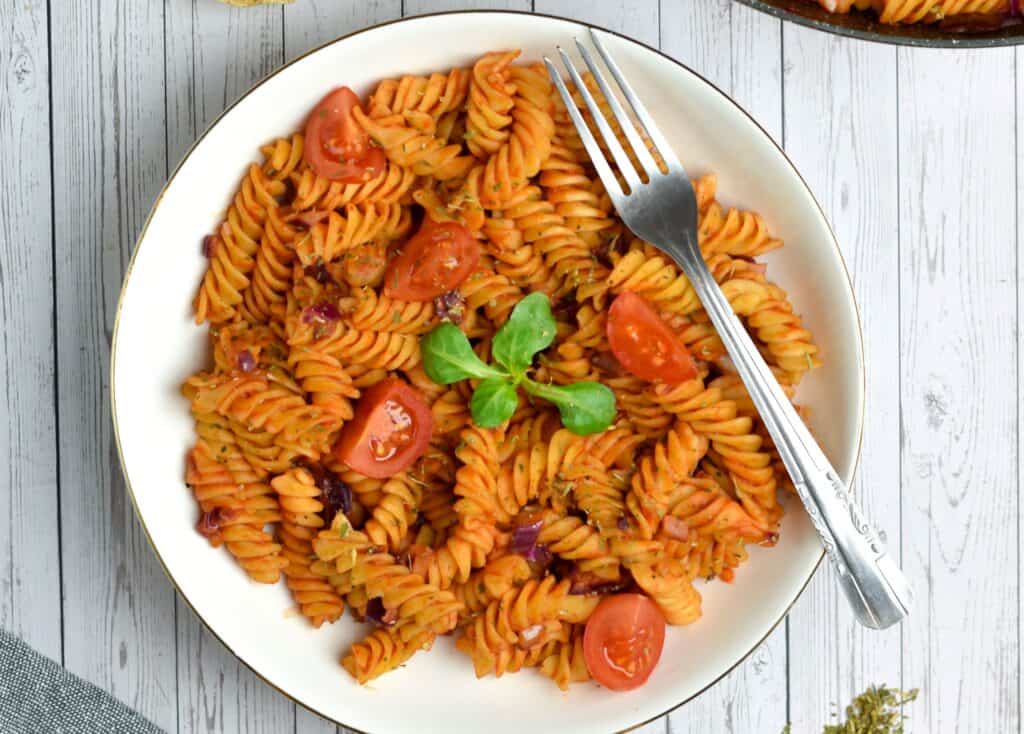
Triathlon training is a grueling and demanding sport that requires athletes to have a high level of fitness in all three disciplines: swimming, cycling, and running. To compete in a triathlon, athletes must be able to swim long distances, cycle for hours, and run a marathon – all in one event.
Given the intense physical demands of triathlon training, many athletes wonder whether it is possible to build muscle while training for this endurance sport. Individuals who are new to weightlifting may be able to build some muscle while training for a triathlon. Intermediates and advanced lifters will have a much harder time. In fact, their best hopes may be just maintaining the muscle they already have.
By understanding the challenges of building muscle while training for a triathlon, athletes can better plan their training and nutrition to achieve their desired performance goals.
Challenges of Building Muscle While Doing Intense Endurance Training
Building muscle while training for a triathlon can be a challenging task due to the unique physical demands of the sport. Triathlon training involves high-volume endurance training, which places significant stress on the body. The body adapts to this stress by becoming more efficient at using oxygen and energy, and by increasing endurance capacity. However, this type of training can also cause muscle breakdown, which can hinder muscle growth.
One of the key challenges of building muscle while training for a triathlon is the concept of “opposing adaptations”. Endurance training and strength training trigger opposing adaptations in the body. Endurance training focuses on developing the body’s aerobic energy system, while strength training focuses on developing the anaerobic energy system. These opposing adaptations can make it challenging to build muscle while doing endurance training.
Endurance training results in an increase in AMP kinase (AMPK). AMPK signals the body to break down glucose and fat for energy, which is just what you need for such training. However, AMPK can also hinder muscle protein synthesis. This in turn can lead to muscle loss, or at the very least, suboptimal muscle gain.
Another challenge of building muscle during endurance training is the unique demands placed on the body. Endurance training primarily develops slow-twitch muscle fibers, which are optimized for endurance activities but have limited potential for hypertrophy (muscle growth). Additionally, endurance training places a high demand on the body’s energy systems, leaving little energy available for muscle growth. Finally, recovery time between endurance training sessions can be limited, making it challenging to adequately recover and build muscle.
Despite these challenges, building muscle while doing endurance training is possible. The key is to incorporate strength training into your triathlon training plan in a way that optimizes both strength and endurance performance. By doing so, you can maintain muscle mass and potentially even build muscle depending on your level of training.
Balancing Triathlon Training and Bodybuilding
For individuals who are passionate about both bodybuilding and triathlon, finding the right balance between the two can be a challenge. While these two pursuits seem to be at opposite ends of the spectrum, it is possible to pursue both with a little bit of planning and strategy.
The first question that often comes up is whether it is possible to be both a bodybuilder and a triathlete. The answer is yes, it is definitely possible. However, it requires careful planning and prioritization.
To balance these two pursuits, it’s important to focus on the specific goals of each. Bodybuilding is focused on maximizing muscle growth and development, while triathlon is focused on developing endurance and speed. These goals require different types of training, nutrition, and recovery strategies.

The key is to find a way to integrate strength training and endurance training in a way that complements both pursuits. This means that strength training should be focused on building functional strength that will translate to better triathlon performance, rather than purely aesthetic muscle growth.
The endurance training aspect is less flexible. As a triathlete, you know exactly how you must prepare for an event like an Ironman since the sport has specific parameters. It’s more about bodybuilding around the triathlon training rather than the other way around.
The best strategy for incorporating bodybuilding into an endurance training routine is to stick with what you’re used to. This encompasses exercises, workout volume, rep ranges, etc.
Everyone knows when you introduce a new exercise or training style to a bodybuilding program, you inevitably get sore. But you can’t afford to be sore for your next run, bike ride, or swimming session.
The interesting part about bodybuilding is that muscle is hard to build but easy to maintain. With that said, you can easily decrease your workout volume and still maintain a great deal of muscle mass so long as nutrition and sleep are on point.
The key to maintaining muscle while lowering workout volume is to maintain intensity in the workouts. While you don’t have to go to complete failure, the sets should approach failure.
Nutrition for Triathlon Training and Muscle Building
Nutrition is a critical aspect of both triathlon training and muscle building. Proper nutrition provides the body with the energy it needs to perform at its best, as well as the nutrients required for muscle building and recovery.
When it comes to muscle building, protein is essential. Protein is the building block of muscle, and it’s essential for muscle growth and repair. The standard protein intake for anyone looking to build and maintain muscle is one gram per pound of lean body mass.
Protein is often overlooked by triathletes. Their focus is mainly on carbohydrates to fuel their training. Due to the muscle damage accrued during Ironman workouts, protein intake should remain at a high level.
To support muscle building during triathlon training, it’s important to consume protein-rich foods such as lean meats, eggs, fish, and dairy products provided they digest well. It’s also essential to distribute protein intake throughout the day, consuming protein-rich meals and snacks every 3-4 hours.
In addition to protein, carbohydrates are crucial for fueling endurance training. Carbohydrates are the body’s preferred source of fuel for high-intensity exercise, and they are essential for maintaining energy levels during long training sessions.
While carbohydrates do not build muscle directly, a high carbohydrate diet can help prevent muscle loss. Carbohydrates are considered a “muscle-sparing” nutrient.
According to the Academy of Nutrition and Dietetics, endurance athletes should aim to consume approximately 3-5 grams of carbohydrates per pound of body weight per day. This means that a 150-pound triathlete would need to consume approximately 450-750 grams of carbohydrates per day.

It’s important to choose healthy carbohydrates such as fruits, vegetables, whole grains, and legumes, and to consume them in combination with protein to support muscle building and recovery. However, triathletes shouldn’t stray from fast-digesting carbs either.
Getting 700 grams of carbohydrates exclusively from healthy sources can cause gastrointestinal distress. As a result, you shouldn’t stray from simple carbs like pasta, bread, fruit juices, or sports drinks to fill your needs.
In addition to protein and carbohydrates, healthy fats are essential for overall health and energy production. Fats are a secondary fuel source for this type of activity, but a fuel source nonetheless.
It’s also essential to hydrate adequately before, during, and after training to support performance and recovery. Some triathlon athletes may prefer to consume less water during training. Post-training hydration becomes even more imperative in this situation. Weighing yourself before and after a workout is an indication of the amount of water lost, and thus how much needs to be replaced.
Conclusion
While endurance training and bodybuilding may fall on opposite ends of the fitness spectrum, it is still possible to do both. You won’t be able to perform both to optimal levels, but with the right preparation, you can do your best to maintain muscle while participating in triathlon training.
